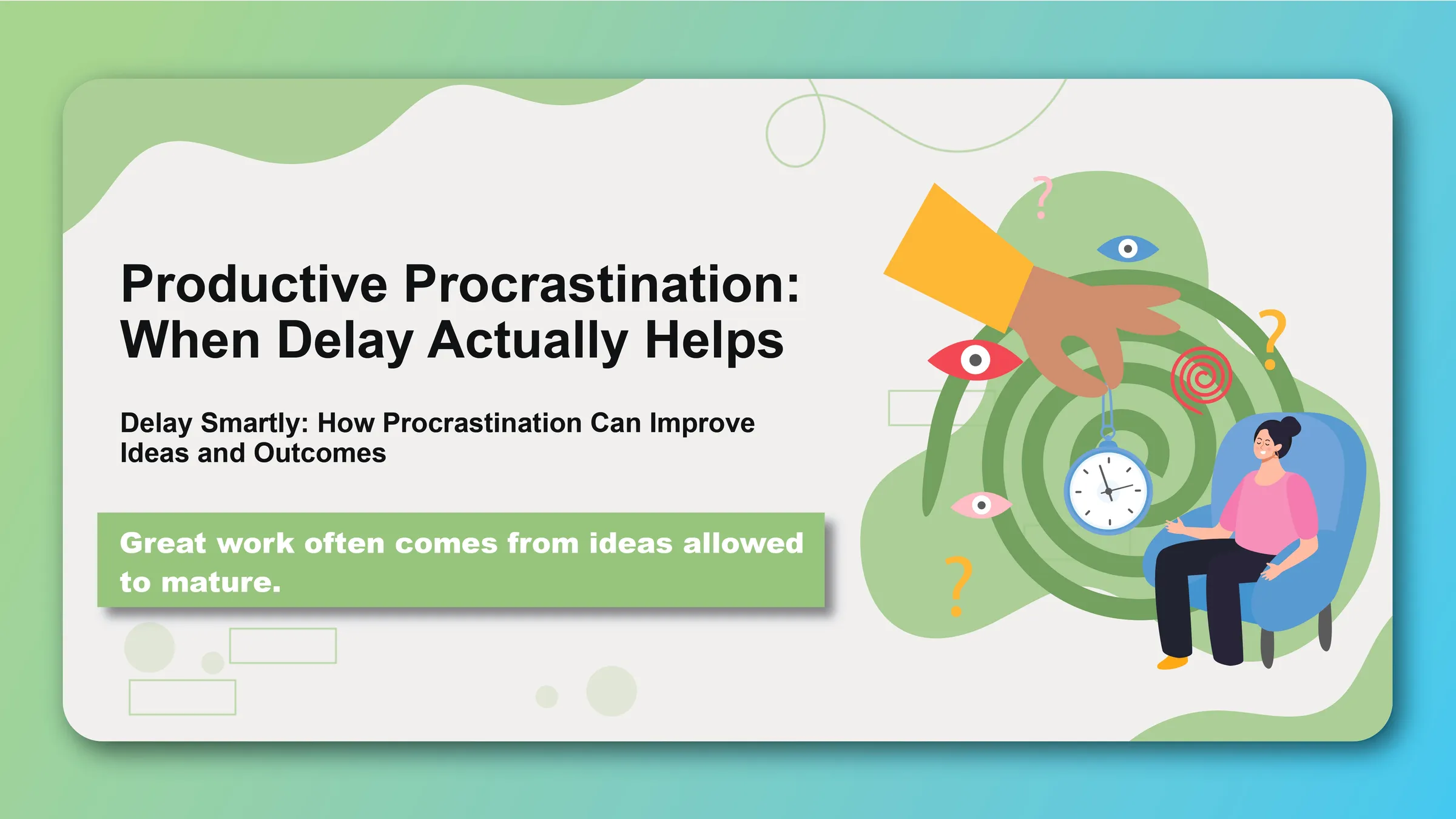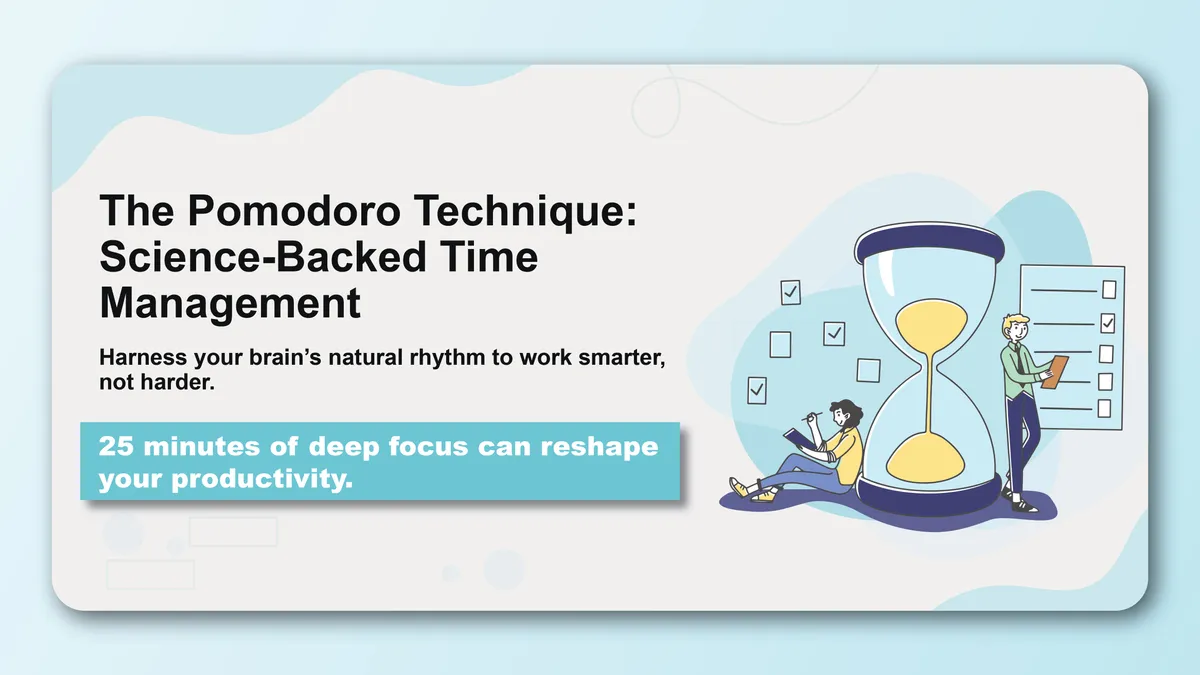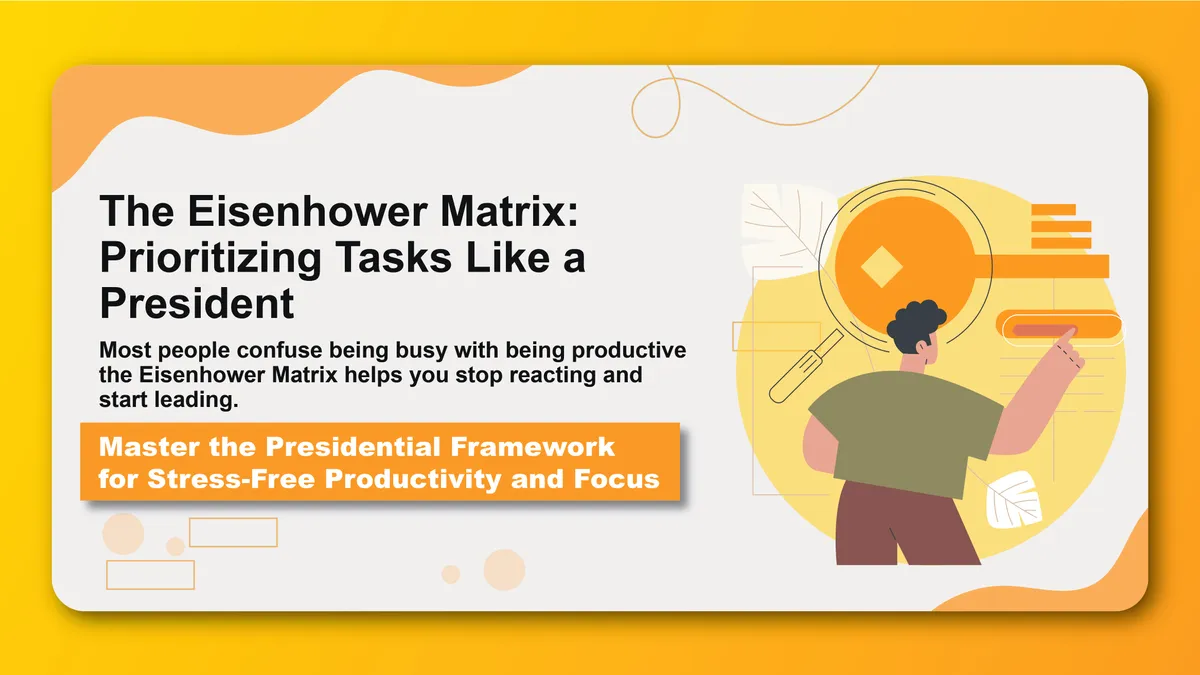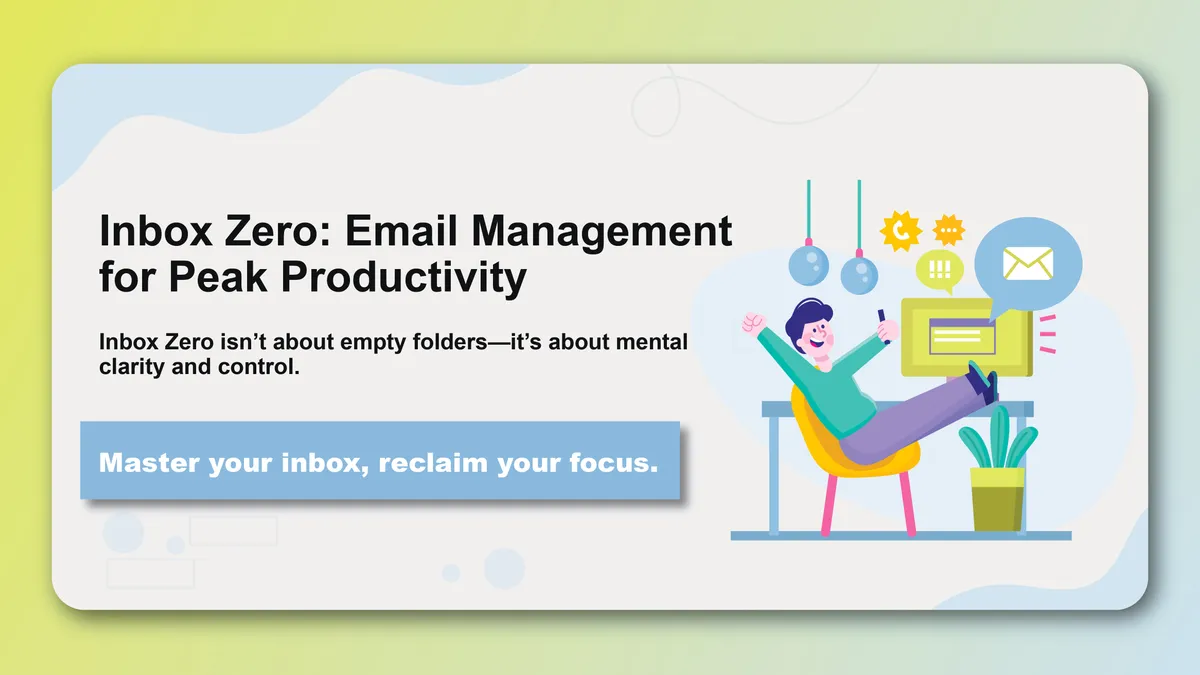We've been taught that procrastination is the enemy of productivity—a character flaw that sabotages our success and derails our goals. But what if some forms of procrastination are actually beneficial? What if there are times when delaying action leads to better outcomes than immediate action?
This is the counterintuitive concept of productive procrastination: the strategic use of delay to improve decision-making, enhance creativity, and achieve better results. Unlike destructive procrastination, which stems from fear or avoidance, productive procrastination is intentional and purposeful.
The key distinction lies in the motivation and outcome. While destructive procrastination is driven by anxiety and leads to stress and poor results, productive procrastination is driven by wisdom and leads to better decisions and superior outcomes. It's about knowing when to act and when to wait—and having the discipline to do both.
Understanding Productive Procrastination
The Neuroscience of Delay
The Incubation Effect When you stop actively working on a problem, your subconscious mind continues processing it. This phenomenon, known as the incubation effect, often leads to creative insights and breakthrough solutions that wouldn't emerge through forced effort.
Default Mode Network Activation During periods of apparent inactivity, your brain's default mode network becomes active. This network is responsible for making connections between disparate ideas, processing experiences, and generating creative solutions.
Temporal Discounting and Decision Quality Research shows that we often make better decisions when we allow time for reflection. The emotional intensity of immediate circumstances can cloud judgment, while time provides perspective and clarity.
The Psychology of Strategic Delay
Emotional Regulation Delaying action allows intense emotions to subside, leading to more rational decision-making. This is particularly important for important decisions or sensitive communications.
Information Gathering Strategic delay provides time to gather additional information, consult with others, and consider alternatives that might not be immediately apparent.
Preparation and Planning Postponing action can allow for better preparation, resource gathering, and strategic planning that ultimately leads to superior execution.
Types of Productive Procrastination
1. Creative Procrastination
The Phenomenon Deliberately delaying creative work to allow ideas to marinate and develop in the subconscious mind.
When It Works
- Complex creative projects requiring innovative solutions
- Writing projects that need emotional depth or unique perspectives
- Problem-solving situations where the first solution isn't optimal
- Brainstorming sessions that benefit from diverse input
How to Apply It
- Set artificial deadlines earlier than actual deadlines
- Work on multiple projects simultaneously
- Take breaks during creative sessions
- Allow ideas to develop naturally without forcing them
Real-World Examples
- Writers who let ideas percolate before writing
- Designers who sketch concepts and return to them later
- Musicians who allow melodies to develop over time
- Entrepreneurs who let business ideas mature before launching
2. Strategic Procrastination
The Phenomenon Deliberately delaying decisions or actions to gather more information or wait for better timing.
When It Works
- Major life decisions that will have long-term consequences
- Investment decisions that benefit from market analysis
- Hiring decisions that require thorough candidate evaluation
- Product launches that need market timing
How to Apply It
- Set decision deadlines that allow for adequate research
- Create information-gathering checklists
- Establish criteria for when to stop waiting and act
- Build in consultation periods with advisors
Real-World Examples
- Investors who wait for market conditions to improve
- Job seekers who wait for the right opportunity
- Entrepreneurs who delay launching until market conditions are optimal
- Negotiators who wait for leverage to improve
3. Emotional Procrastination
The Phenomenon Deliberately delaying emotionally charged actions to allow feelings to settle and perspective to develop.
When It Works
- Difficult conversations that require tact and diplomacy
- Responses to criticism or negative feedback
- Conflict resolution situations
- Major relationship decisions
How to Apply It
- Implement a "cooling off" period for emotional decisions
- Use the 24-hour rule for important communications
- Practice emotional regulation techniques during delays
- Seek perspective from trusted advisors
Real-World Examples
- Managers who delay giving feedback until they can be constructive
- Employees who wait to respond to criticism until they can be professional
- Partners who postpone difficult conversations until they can be productive
- Leaders who delay major announcements until they can be strategic
4. Perfectionist Procrastination
The Phenomenon Deliberately delaying completion to improve quality and achieve higher standards.
When It Works
- High-stakes presentations or performances
- Important written communications
- Creative works that represent your brand
- Projects where quality is more important than speed
How to Apply It
- Set quality standards that justify the delay
- Create review cycles that improve the work
- Seek feedback from others during the delay period
- Balance perfectionism with practical deadlines
Real-World Examples
- Authors who revise manuscripts multiple times
- Speakers who practice presentations until they're polished
- Designers who iterate on concepts until they're optimal
- Chefs who perfect recipes before adding them to menus
The Dark Side: When Procrastination Becomes Destructive
Warning Signs of Destructive Procrastination
Fear-Based Delay When procrastination is driven by fear of failure, criticism, or judgment rather than strategic thinking.
Indefinite Postponement When there's no clear end date or decision criteria for when to stop procrastinating and take action.
Stress and Anxiety When the delay creates more stress than the original task or decision.
Opportunity Cost When the delay causes you to miss important opportunities or deadlines.
The Procrastination Spectrum
Destructive Procrastination: Driven by fear, leads to stress, has no clear endpoint Neutral Procrastination: Driven by comfort, leads to status quo, maintains current state Productive Procrastination: Driven by wisdom, leads to better outcomes, has strategic purpose
Frameworks for Productive Procrastination
The Strategic Delay Framework
Step 1: Assess the Situation
- Is this a decision that benefits from reflection?
- Are there unknowns that time might clarify?
- Will additional information become available?
- Are there emotional factors that need to settle?
Step 2: Set Clear Criteria
- What information are you waiting for?
- What would change your decision?
- What is the maximum time you'll allow for delay?
- What are the costs of continued waiting?
Step 3: Use the Delay Productively
- Gather relevant information
- Consult with advisors or experts
- Develop contingency plans
- Prepare for multiple scenarios
Step 4: Create Decision Triggers
- Set specific dates for decision-making
- Define information thresholds
- Establish quality standards
- Create accountability measures
The Creative Incubation Process
Phase 1: Preparation
- Define the problem clearly
- Gather initial information
- Attempt initial solutions
- Reach a natural stopping point
Phase 2: Incubation
- Step away from the problem
- Engage in unrelated activities
- Allow subconscious processing
- Avoid forcing solutions
Phase 3: Illumination
- Recognize insights as they emerge
- Capture ideas without judgment
- Build on initial insights
- Develop promising concepts
Phase 4: Verification
- Test and refine solutions
- Evaluate feasibility
- Implement promising ideas
- Learn from results
Strategic Applications
Business and Career
Investment Decisions
- Research market conditions
- Analyze competitive landscape
- Evaluate risk factors
- Wait for optimal timing
Career Transitions
- Assess industry trends
- Develop necessary skills
- Build professional networks
- Wait for the right opportunity
Product Development
- Gather customer feedback
- Analyze market needs
- Iterate on designs
- Time launches strategically
Personal Life
Major Purchases
- Research options thoroughly
- Compare prices and features
- Consider long-term needs
- Wait for better deals
Relationship Decisions
- Allow emotions to settle
- Seek perspective from others
- Consider long-term implications
- Wait for clarity
Life Transitions
- Explore options thoroughly
- Prepare for changes
- Build necessary resources
- Time transitions strategically
Building Productive Procrastination Skills
Developing Discernment
Learn to Distinguish
- Productive vs. destructive procrastination
- Strategic delay vs. avoidance
- Useful reflection vs. analysis paralysis
- Optimal timing vs. missed opportunities
Practice Assessment
- Regularly evaluate your procrastination patterns
- Identify situations where delay helped or hurt
- Develop criteria for when to act vs. wait
- Build feedback loops to improve judgment
Creating Systems
Decision Frameworks
- Develop templates for common decisions
- Create checklists for information gathering
- Establish timelines for different types of decisions
- Build in accountability measures
Support Systems
- Identify advisors for important decisions
- Create peer groups for feedback
- Build relationships with mentors
- Develop professional networks
Managing the Process
Time Management
- Set clear deadlines for decision-making
- Create buffer time for reflection
- Build in review cycles
- Balance urgency with quality
Emotional Management
- Develop emotional regulation skills
- Practice mindfulness and reflection
- Seek perspective from others
- Build resilience for uncertainty
Common Mistakes and How to Avoid Them
Mistake 1: Confusing Procrastination with Perfectionism
The Problem: Using the need for perfection as an excuse to delay indefinitely The Solution: Set quality standards and deadlines that balance excellence with practicality
Mistake 2: Procrastinating on Everything
The Problem: Applying delay to all decisions and actions The Solution: Develop criteria for when delay is beneficial vs. when immediate action is needed
Mistake 3: Lacking Decision Criteria
The Problem: Procrastinating without clear endpoints or success measures The Solution: Always define what you're waiting for and when you'll stop waiting
Mistake 4: Avoiding Responsibility
The Problem: Using strategic delay as an excuse to avoid difficult decisions The Solution: Distinguish between strategic thinking and avoidance behavior
The Art of Timing
Recognizing the Right Moment
Market Timing
- Economic cycles and trends
- Competitive landscapes
- Customer readiness
- Resource availability
Personal Timing
- Energy levels and capacity
- Skill development stage
- Life circumstances
- Emotional readiness
Social Timing
- Cultural trends and shifts
- Relationship dynamics
- Team readiness
- Stakeholder alignment
Balancing Act
Speed vs. Quality
- When to prioritize quick action
- When to prioritize thorough preparation
- How to balance both needs
- When to accept "good enough"
Certainty vs. Opportunity
- When to wait for more information
- When to act despite uncertainty
- How to manage risk
- When to trust intuition
Your Productive Procrastination Action Plan
Immediate Actions (This Week)
- Identify one area where strategic delay might be beneficial
- Practice distinguishing between productive and destructive procrastination
- Set up a framework for decision-making with built-in reflection time
- Create criteria for when to act vs. when to wait
Short-term Goals (Next Month)
- Develop systems for productive procrastination in key areas
- Practice the creative incubation process
- Build feedback loops to improve your timing
- Create accountability measures for strategic delays
Long-term Vision (Next Quarter)
- Master the art of strategic timing
- Develop expertise in your areas of decision-making
- Build a reputation for thoughtful, well-timed actions
- Help others distinguish between productive and destructive procrastination
Productive procrastination isn't about being lazy or avoiding work—it's about being strategic with your time and energy. When you learn to delay strategically, you can make better decisions, create better work, and achieve better outcomes.
The key is developing the wisdom to know when to act and when to wait, and the discipline to do both with intention and purpose. Master this balance, and you'll find that sometimes the best action is no action—at least not yet.
Ready to master the art of strategic timing? Plan your decisions and track your timing with Habityzer and discover how productive procrastination can improve your outcomes.



